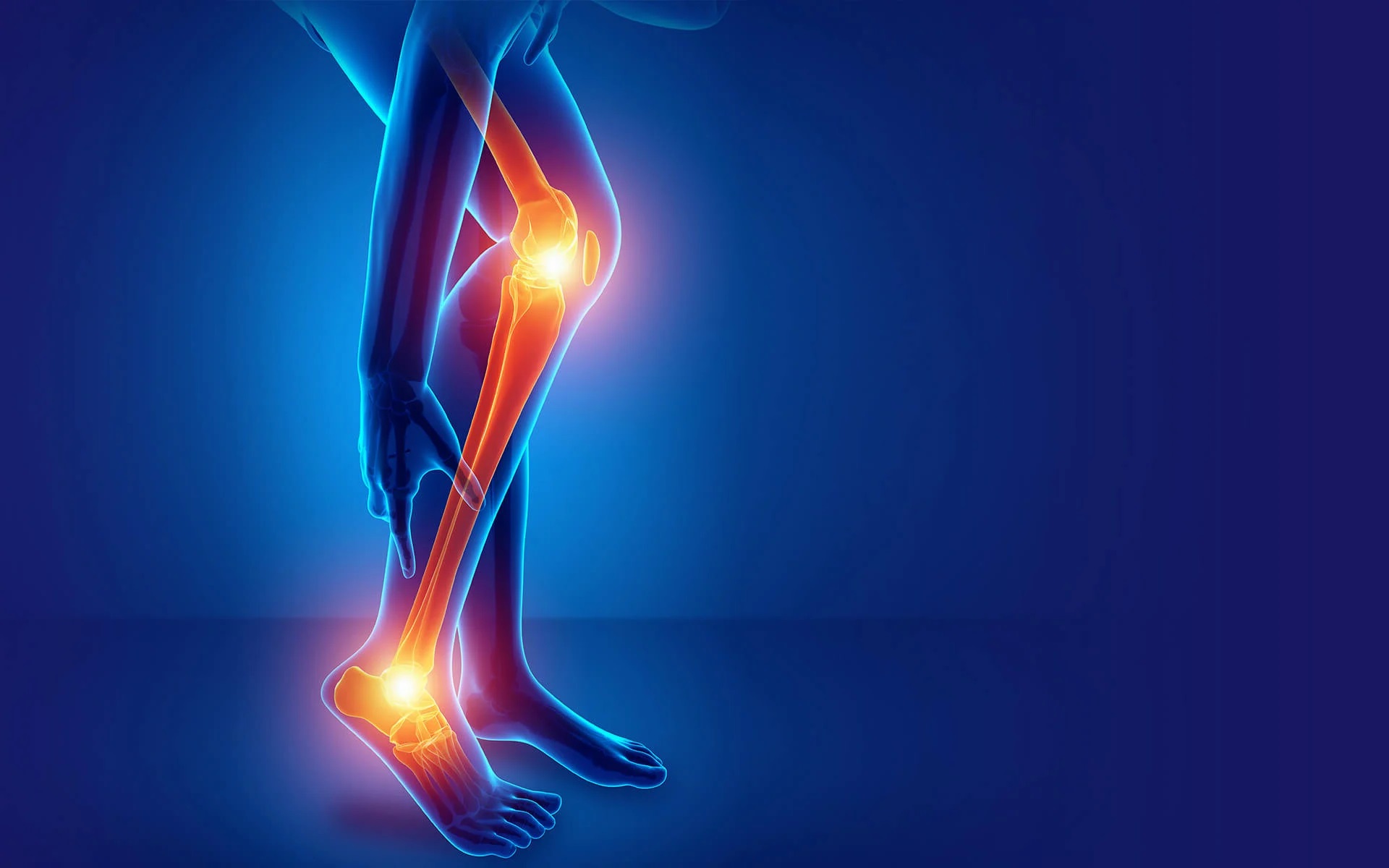
What is Nerve Compression Syndrome? Imagine feeling a constant tingling or numbness in your hand or foot. This could be due to Nerve Compression Syndrome. It's a condition where a nerve gets squeezed by surrounding tissues, leading to pain, weakness, or even muscle loss. Common types include carpal tunnel syndrome, affecting the wrist, and cubital tunnel syndrome, impacting the elbow. Causes range from repetitive movements to systemic conditions like diabetes. Early diagnosis and treatment are crucial to prevent permanent damage. Understanding the symptoms and risk factors can help manage and alleviate this often painful condition.
Key Takeaways:
- Nerve compression syndrome, caused by chronic pressure on nerves, leads to pain, tingling, and weakness. It can be prevented by avoiding repetitive activities and maintaining a healthy weight.
- Common nerve entrapments like carpal tunnel syndrome and thoracic outlet syndrome have specific symptoms and diagnostic methods. Early intervention is crucial to prevent long-term damage.
What is Nerve Compression Syndrome?
Nerve compression syndrome, also known as compression neuropathy or nerve entrapment syndrome, occurs when a peripheral nerve is subjected to chronic, direct pressure. This pressure can lead to various symptoms and potential nerve damage.
- Definition: Nerve compression syndrome is caused by chronic, direct pressure on a peripheral nerve, leading to neuropathic pain and potential nerve damage.
- Symptoms: Common symptoms include pain, tingling, numbness, and muscle weakness. Symptoms affect specific body parts depending on which nerve is compressed.
- Types of Nerve Compression: The most common types include carpal tunnel syndrome (median nerve), cubital tunnel syndrome (ulnar nerve), thoracic outlet syndrome (lower trunk), and tarsal tunnel syndrome (posterior tibial nerve).
Causes and Risk Factors
Understanding the causes and risk factors can help in preventing and managing nerve compression syndrome effectively.
- Causes: Nerve compression can be caused by external pressure, anatomic anomalies, systemic conditions, and local factors. External forces include leaning on the affected extremity or using medical equipment like splints or casts.
- Anatomic Factors: Anatomic factors such as space-occupying lesions (lipomas, fibromas, ganglion cysts) and hematomas can contribute to nerve entrapment.
- Systemic Factors: Systemic factors like obesity, chronic inflammatory states (diabetes, hypothyroidism), peripheral edema, and pregnancy can also contribute to nerve compression.
- Occupational Risks: Activities and occupations requiring repetitive joint movements increase the risk of developing nerve compression syndromes. Examples include typing, assembly line work, and sports involving repetitive hand movements.
- Incidence: Carpal tunnel syndrome is the most common nerve compression syndrome, with an annual incidence of 1 to 3 persons per 1000 and a prevalence of 50 people per 1000 in the United States.
- Gender Prevalence: Carpal tunnel syndrome affects women more commonly than men, with a ratio of 10 to 1.
- Age-Related Incidence: The incidence of nerve compression syndromes increases with age, particularly in older adults who may have more anatomic anomalies and systemic conditions.
Symptoms and Clinical Presentation
Recognizing the symptoms and clinical presentation of nerve compression syndromes is crucial for early diagnosis and treatment.
- Repetitive Activities: Repetitive activities involving the hand or upper extremity are more commonly associated with nerve compression syndromes. These activities can lead to microvascular changes, edema, and structural alterations in the nerve.
- Chronic Inflammatory States: Conditions like diabetes and hypothyroidism are frequently implicated in the development of nerve compression syndromes due to their chronic inflammatory states.
- Obesity: Obesity is a significant risk factor for nerve compression syndromes as it can lead to increased pressure on nerves, particularly in the lower limbs.
- Pregnancy: Pregnancy can also cause nerve compression due to weight gain and peripheral edema, which increase pressure on nerves.
- Physical Examination: A detailed medical history and physical examination are crucial for diagnosing nerve compression syndromes. The examination should include assessing the affected extremity and cervical spine to identify any anatomic factors contributing to the compression.
- Diagnostic Methods: Diagnostic methods include clinical examination, diagnostic nerve blocks, imaging studies (MRI, CT scans), and electrophysiology testing (EMG, NCV).
- Clinical Presentation: The clinical presentation of nerve compression syndromes varies depending on the affected nerve. For example, carpal tunnel syndrome typically presents with numbness and tingling in the thumb, index, and middle fingers.
- Symptom Duration: Symptoms of nerve compression syndromes can come on gradually and may come and go, ranging from mild to severe. They often worsen with activities that pull or press on the affected nerve.
- Localized Pain: Nerve compression syndromes often present with localized or referred pain along the affected nerve. The pain can be described as a dull ache, shooting pain, or electric shock-like sensation.
- Numbness and Tingling: Numbness and tingling are common symptoms of nerve compression syndromes. These sensations can be felt in specific areas of the body depending on which nerve is affected.
- Muscle Weakness: Muscle weakness is another symptom of nerve compression syndromes. This weakness can be localized to specific muscles innervated by the compressed nerve.
- Muscle Wasting: Chronic nerve compression can lead to muscle wasting, particularly in severe cases where the compression lasts more than six weeks.
- Dry Skin: Chronic cases of motor and sensory nerve entrapment can result in dry, thin skin due to reduced nerve function affecting sweat glands.
- Paresthesia: Paresthesia, which is an abnormal sensation such as tingling or numbness without any external stimulus, is a common symptom of nerve compression syndromes.
- Burning Sensation: Some patients may experience a burning sensation in the affected area, which can be quite uncomfortable and debilitating.
- Impaired Movement: Impaired movement of the affected body part is another symptom of nerve compression syndromes. This impairment can range from mild stiffness to severe paralysis.
Diagnosis and Treatment
Proper diagnosis and treatment are essential to manage nerve compression syndromes effectively and prevent long-term damage.
- Risk Factors: Prior fractures or dislocations, scar tissue, bone spurs, arthritis, swelling, cysts, and systemic conditions like diabetes are all risk factors for developing nerve compression syndromes.
- Treatment Options: Treatment options for nerve compression syndromes include nonsurgical methods such as physical therapy, occupational therapy, and lifestyle modifications. Surgery may be necessary if nonsurgical treatments do not provide adequate symptom relief.
- Nonsurgical Treatments: Nonsurgical treatments often involve rest, ice, compression, and elevation (RICE) to reduce inflammation and relieve pressure on the nerve. Physical therapy exercises can help improve nerve mobility and reduce symptoms.
- Surgical Decompression: Surgical decompression involves relieving pressure on the compressed nerve by removing any compressive structures. This procedure can help restore nerve function but may not always reverse the physiological changes that occurred before treatment.
- Interprofessional Team Approach: An interprofessional team approach is essential for evaluating and treating patients with nerve compression syndromes. This team should include neurologists, neurosurgeons, orthopedic surgeons, physical therapists, and occupational therapists.
- Prevention Strategies: Preventive strategies include maintaining a healthy weight, avoiding repetitive activities, and using proper ergonomic equipment to reduce the risk of developing nerve compression syndromes.
- Early Intervention: Early intervention is crucial in managing nerve compression syndromes. Untreated chronic nerve compression can lead to permanent damage and long-term disability.
- Symptom Relief: Many people achieve symptom relief through nonsurgical methods. However, if symptoms persist or worsen, surgical intervention may be necessary to decompress the nerve and restore function.
- Diagnostic Tests: Diagnostic tests such as EMG and NCV can help confirm the diagnosis of nerve compression syndromes by assessing nerve conduction and muscle function.
- Imaging Studies: Imaging studies like MRI and CT scans can help identify anatomical abnormalities or lesions that may be compressing the nerve.
- Clinical Exam: A clinical exam is essential for diagnosing nerve compression syndromes. The exam should include a detailed history of the patient's symptoms and a thorough physical examination of the affected area.
- Diagnostic Blocks: Diagnostic nerve blocks can help confirm the diagnosis by temporarily relieving pressure on the compressed nerve and assessing symptom relief.
Pathophysiology and Recovery
Understanding the pathophysiology and recovery process can provide insights into the long-term management of nerve compression syndromes.
- Chronic vs. Acute Compression: Chronic compression takes a unique pathophysiological course compared to acute compression. Chronic compression often leads to more severe and persistent symptoms.
- Pathophysiology: The pathophysiology of nerve compression involves microvascular changes, edema, injury to the myelin sheath, and structural alterations in membranes at the organelle levels in both the myelin sheath and the nerve axon.
- Focal Segmental Demyelination: Focal segmental demyelination is a common feature of compression syndromes. This process involves the loss of myelin sheath in specific segments of the nerve, leading to impaired nerve conduction.
- Incomplete Recovery: Incomplete recovery in more chronic and severe cases of entrapment is due to Wallerian degeneration of the axons and permanent fibrotic changes in the neuromuscular junction that may prevent full reinnervation and restoration of function.
- Recovery After Surgery: Complete recovery of function after surgical decompression reflects remyelination of the injured nerve. However, incomplete recovery may occur due to the permanent changes mentioned above.
- Complications: Untreated chronic nerve compression can lead to complications such as permanent muscle loss and nerve damage. Early intervention is crucial to prevent these complications.
Common Nerve Entrapments
Different nerves can be affected by compression, leading to various syndromes with specific symptoms and diagnostic methods.
- Common Nerve Entrapments: Common nerve entrapments include carpal tunnel syndrome, cubital tunnel syndrome, thoracic outlet syndrome, and tarsal tunnel syndrome. Each of these syndromes has specific symptoms and diagnostic methods.
- Median Nerve Entrapment: Median nerve entrapment, as seen in carpal tunnel syndrome, typically presents with numbness and tingling in the thumb, index, and middle fingers.
- Ulnar Nerve Entrapment: Ulnar nerve entrapment, as seen in cubital tunnel syndrome, typically presents with numbness and tingling in the ring and little fingers.
- Thoracic Outlet Syndrome: Thoracic outlet syndrome typically presents with pain and numbness in the arm and hand. It is often associated with abnormal biomechanics such as ischiofemoral impingement.
- Tarsal Tunnel Syndrome: Tarsal tunnel syndrome typically presents with pain and numbness in the foot and ankle. It is often associated with conditions like osteoarthritis or rheumatoid arthritis.
- Morton’s Neuroma: Morton’s neuroma is a type of nerve entrapment that occurs between the third and fourth toes. It presents with pain and numbness in the toes and is often associated with forefoot deformities or certain clothing habits.
Final Thoughts on Nerve Compression Syndrome
Nerve compression syndrome affects many people, causing pain, tingling, numbness, and muscle weakness. Understanding its causes, symptoms, and treatments is crucial for managing this condition. Common types include carpal tunnel, cubital tunnel, thoracic outlet, and tarsal tunnel syndromes. Risk factors range from repetitive activities and obesity to systemic conditions like diabetes. Early diagnosis and treatment, whether through physical therapy or surgery, can prevent permanent damage. An interprofessional team approach often yields the best outcomes. Preventive measures, like maintaining a healthy weight and avoiding repetitive strain, can reduce the risk. If you suspect you have nerve compression syndrome, consult a healthcare professional for proper diagnosis and treatment. Early intervention can make a significant difference in your quality of life.
Frequently Asked Questions
Was this page helpful?
Our commitment to delivering trustworthy and engaging content is at the heart of what we do. Each fact on our site is contributed by real users like you, bringing a wealth of diverse insights and information. To ensure the highest standards of accuracy and reliability, our dedicated editors meticulously review each submission. This process guarantees that the facts we share are not only fascinating but also credible. Trust in our commitment to quality and authenticity as you explore and learn with us.


